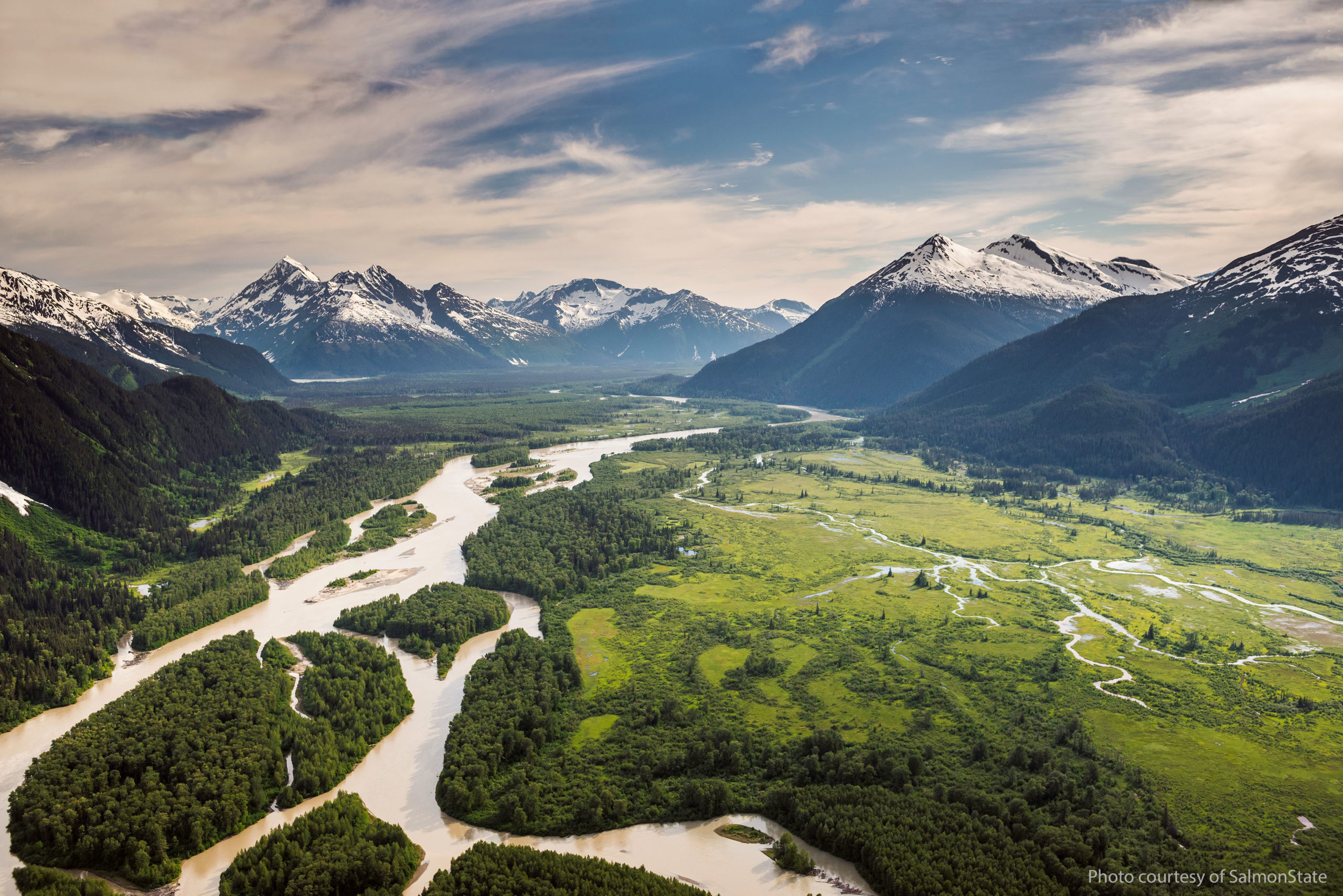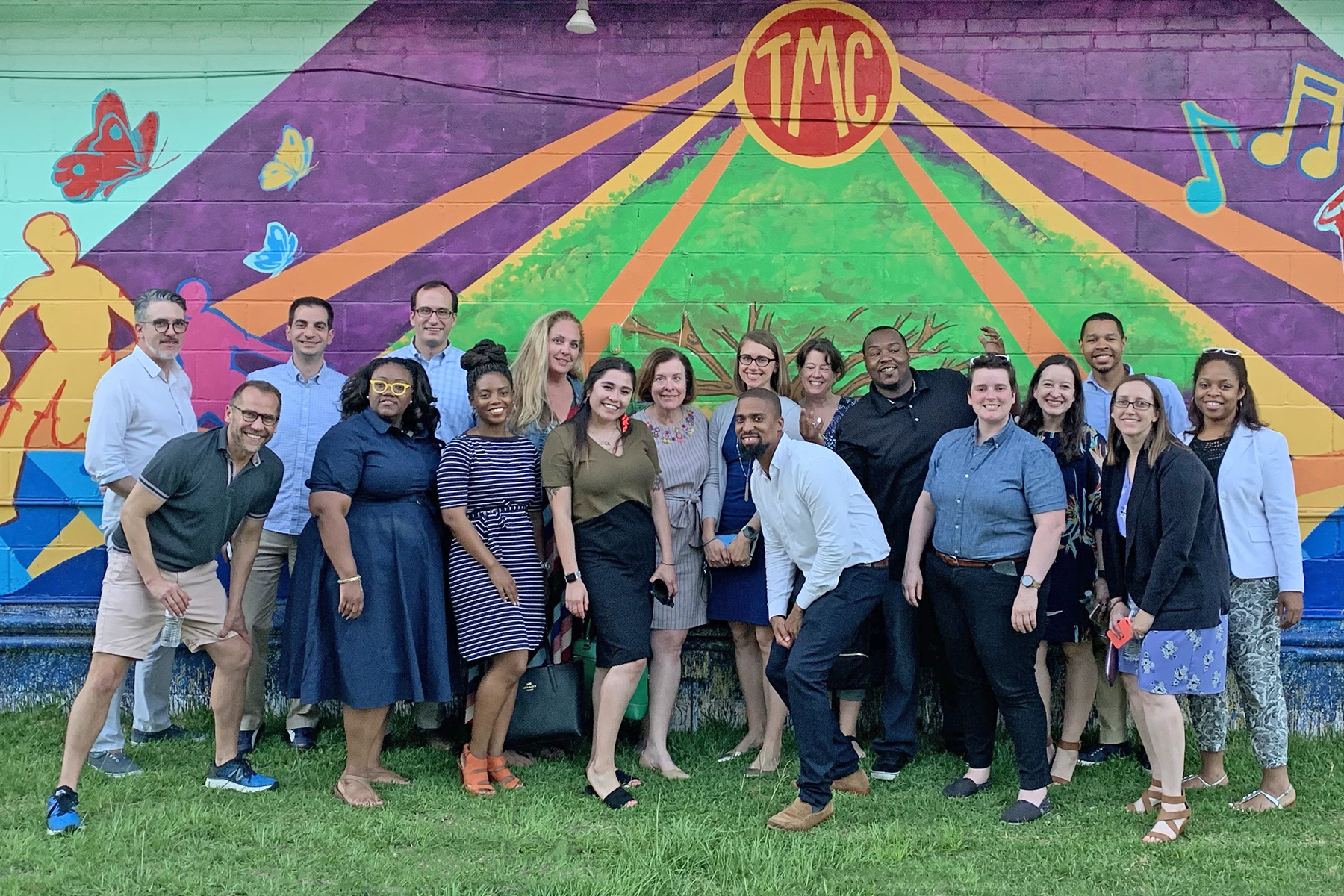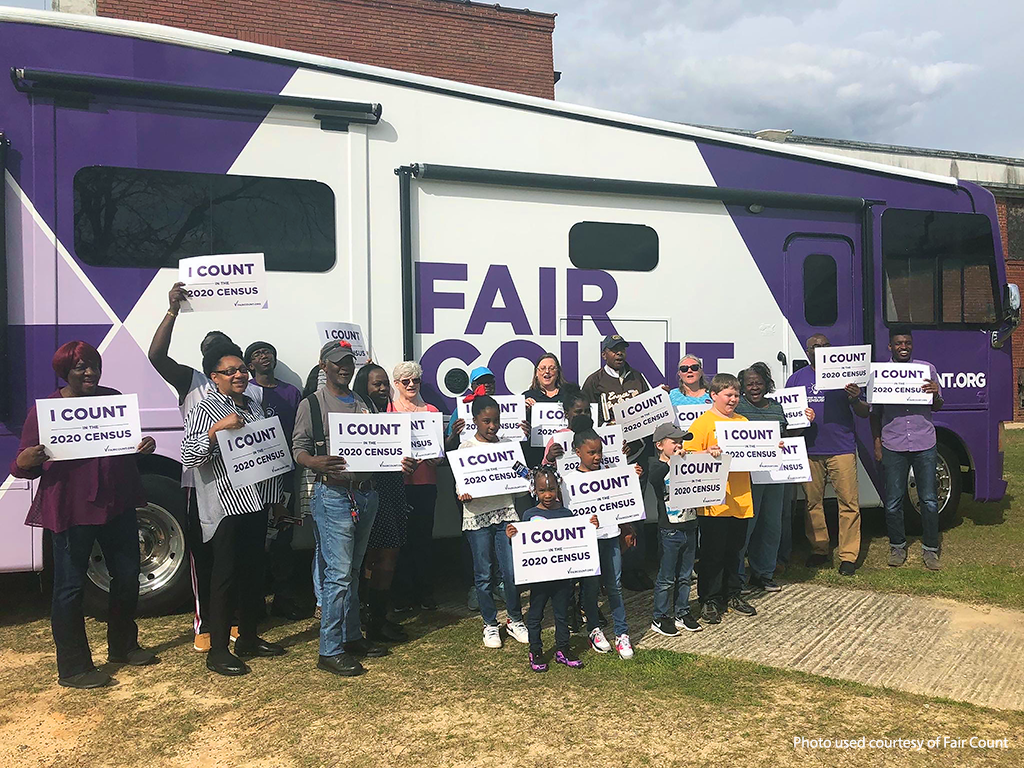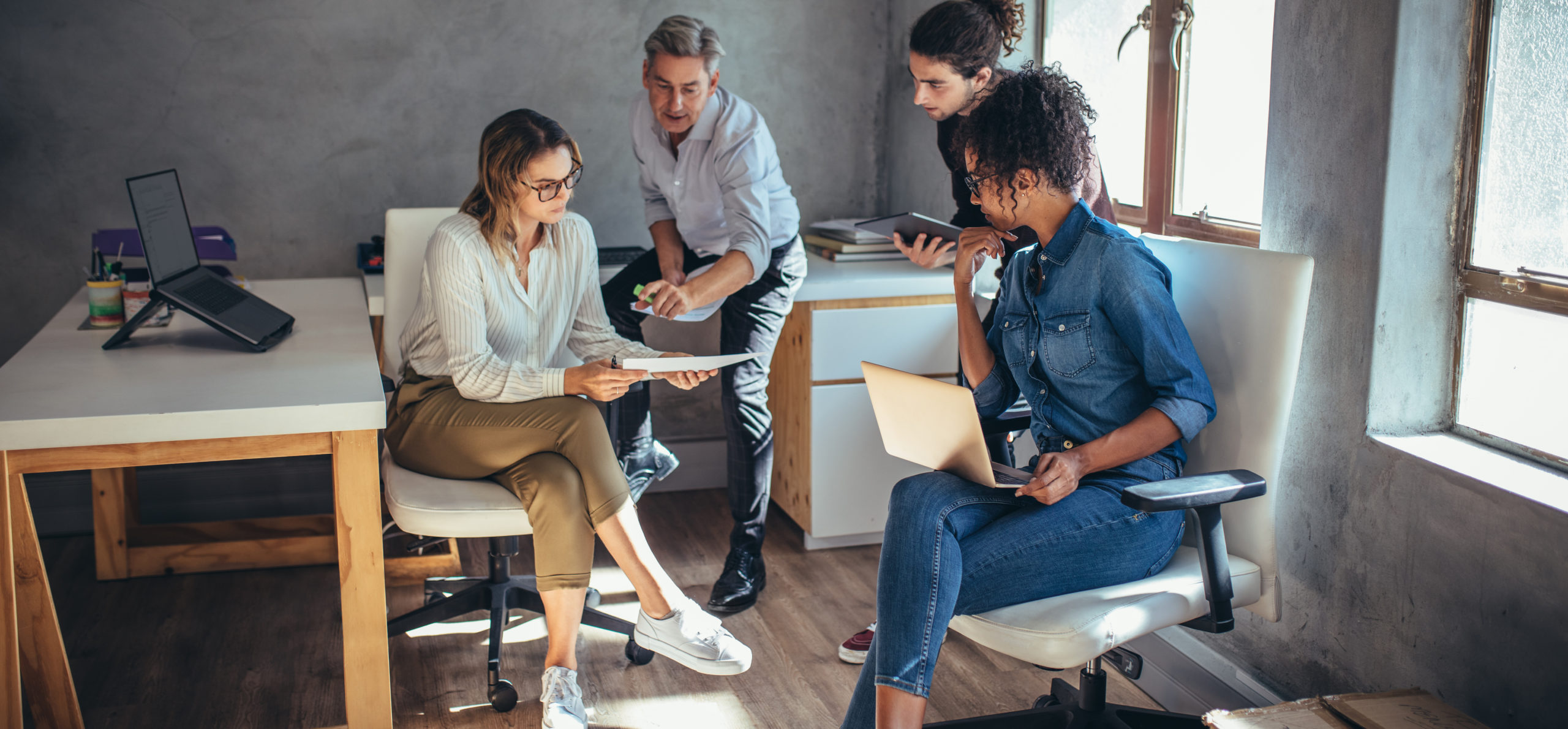July 14, 2021
For many, Alaska has a reputation as the “take-out state,” considered to be most valuable for its ability to extract natural resources. Individuals and organizations from in- and out-of-state rely on Alaska to dig up, cut down, or harvest raw materials that people need for modern society—from wood to oil to animals. Some of these activities can be categorized as renewable and sustainable and some cannot.
Perhaps the truest of the renewable and essential resources Alaska has to offer is its wild salmon. In 2020, the commercial salmon harvest reached almost 117 million fish.
Alaska’s wild salmon is ingrained throughout Alaskan society and provides a foundation for traditional Alaska Native culture, plus recreation, food, income, and employment to hundreds of thousands in Alaska—the Bristol Bay region’s salmon industry alone generates $2 billion of annual revenue and employs nearly 12,000 Americans.
SalmonState, a fiscally-sponsored project of the New Venture Fund, works to keep wild salmon swimming up the rivers they’ve returned to for thousands of years.
Through targeted advocacy and policy campaigns, SalmonState defends salmon habitats and promotes “fish first” policies. The organization also works to ensure Alaska is seen as more than a resource extraction opportunity and instead as a leader in sustainability so it can remain home to wild salmon.
Working Locally and Establishing Trust
Since its inception in 2015, SalmonState has quickly become a key player in ensuring salmon can continue to provide for generations to come. The key to the organization’s success has been its focus on forging local relationships for large-scale collaboration.
SalmonState’s team has deep roots in the state, and they work hard to ensure local people – with an particular emphasis on indigenous peoples—are co-setting the agenda for the cause and helping drive its goals. This collaborative approach has allowed the organization to amass a large network of individuals and groups they can tap into for all kinds of support.
“We don’t necessarily always feel we have to be in the lead,” says Executive Director Tim Bristol, who has been involved in conservation causes in Alaska for 26 years. “SalmonState tries to see its work in service to the communities of Alaska.”
In just six years, the organization has quickly achieved large-scale positive impact in part because of the support it receives from its fiscal sponsor, New Venture Fund.
Prior to SalmonState’s founding, project leaders and funders identified a team with deep expertise on salmon conservation in Alaska, but they needed a fiscal sponsor to help them quickly achieve “big, bold, audacious things.” With New Venture Fund, they’ve received the flexible and modular operational and strategic support needed to succeed in local communities, across the state, and even in international territories.
One of SalmonState’s most recent campaigns, Salmon Beyond Borders, is helping to establish binding international protections for shared American and British Columbian watersheds, fish habitat, and the people and economies that depend on them. This international campaign was made possible because of SalmonState’s ability to facilitate collaboration and trust between business owners, concerned citizens, and Tribal leaders.
Building Networks with Indigenous Communities
Archaeologists place Alaska as the earliest site of salmon consumption in the Americas, and salmon has had intimate ties to Alaska Native cultures for more than 10,000 years. SalmonState recognizes the cultural heritage of salmon and working to collaborate and co-lead with indigenous governments and communities.
Nearly every single one of the organization’s campaigns includes a strong and meaningful relationship with Alaska Native people and their representative tribal governments. The hope is this intentional approach will create the necessary long-lasting solutions that benefit every community in the region. While at times challenging, this is an approach Tim and his coworkers believe is the only way to achieve long term goals. He wishes more leaders in philanthropy would understand this is a time consuming and non-linear effort. Building strong relationships and instilling trust in each other is oftentimes difficult to measure and time frames can be fluid.
“Working with indigenous communities has to move beyond recognition symbols—such as just including a land acknowledgment on your email,” Tim says. Philanthropy leaders have to make a deep commitment and real investment to understanding the needs of local and indigenous communities—which may take them more time than how they usually like to operate, as there are no quick fixes when you’re pushing for equitable solutions.
The organization has also worked hard at building relationships with indigenous communities that extend beyond Alaska’s borders, including First Nations in Northwest British Columbia.
Making Your Cause Resonate
Another key reason for SalmonState’s continuous success is salmon’s power of unity. Tim says that in all of his years of work in environmental causes in Alaska, he’s found the one thing that can unite Alaskans across social and political spectrums is salmon.
Whether people are concerned about salmon for environmental or for economic reasons, every Alaskan—no matter their political affiliation—has a vested interest in preserving salmon and their habitat.
“The thing about salmon is people have their own experiences with it here,” says Tim. “Tens of thousands of people will drive two hours to the South and go and harvest up to 25 fish per household, per day. And they put that away for the winter. That’s sort of a direct acknowledgment of what indigenous peoples have been doing here for up to 10,000 years. There’s a connection.”
Building Success and Preparing for What’s Next
In its work, SalmonState has been able to establish sophisticated data structures that allow it to easily collect and perfect data to make smart decisions about conservation. This smart use of data, paired with the organization’s networking capabilities across diverse communities, has allowed it to become one of the most trusted groups working to protect wild salmon.
The organization is currently focusing on working with the Biden administration to use its powers under the Clean Water Act to help protect Bristol Bay—which is home to the largest sockeye salmon run in the world.
Long-term, SalmonState wants to elevate with others in philanthropy and government the concept of multi-generational thinking in stewardship and sustainability. SalmonState sees Alaska at a crossroads when it comes to salmon conservation. There’s a big opportunity to demonstrate to the rest of the country that Alaska can be a world-class example of effective sustainability while maintaining a high quality of life, building an equitable future for all.



